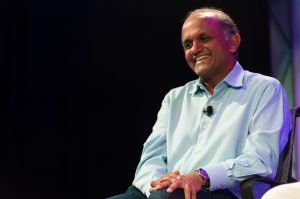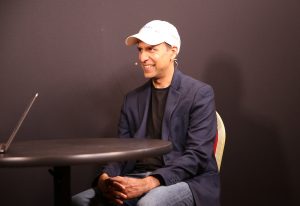Are Oracle Apps Good for Cloudonomics?
![]() Today’s IT economic structure is tickled with the promise of cloud computing. While the rest of the world is still in the process of uncovering an ‘earthlier” contextualization of cloud computing, the tech space is ablaze with dreams of harnessing all its commercial benefits and cost-effective advantages. Gaining popularity within this platform are SaaS solutions—where you only pay for what is used, and don’t spend on unproductive assets. This is the part where the coined term “cloudonomics” develops interest, and Oracle becomes a key player.
Today’s IT economic structure is tickled with the promise of cloud computing. While the rest of the world is still in the process of uncovering an ‘earthlier” contextualization of cloud computing, the tech space is ablaze with dreams of harnessing all its commercial benefits and cost-effective advantages. Gaining popularity within this platform are SaaS solutions—where you only pay for what is used, and don’t spend on unproductive assets. This is the part where the coined term “cloudonomics” develops interest, and Oracle becomes a key player.
SaaS, Cloudonomics and Oracle Leadership
Cloudonomics is turning out to be an essential segment of present-day organizations. The transition from traditional data centers to the cloud comes at a price, with acquiring specific enterprise solutions and a top-notch infrastructure to support the demand of the organization. However, for SME’s, it is a smart move to turn to on-demand cloud services instead of setting up a complete system with a separate IT arm just to oversee applications management, licensing, maintenance, troubleshooting and more. We gain insight on SME’s use of enterprise apps from an Infosys white paper by Mandar Bhale, Principal Consultant, Oracle Practice, Infosys, titled “Oracle applications and the economics of cloud computing.”
The costs for SaaS solutions could include a one-time implementation fees along with customization, and annual fees based on users and transaction volume, versus numerous recurring and one-time expenses for traditional ERPs. And typical to startups is a likelihood to avoid big risks and instead turn to SaaS for controlled applications management, with a focus on low costs compared to having an in-house system.
This is the kind of business dogma that Oracle looks to penetrate with their enterprise applications. A Forbes.com article described these new applications:
“Designed and optimized specifically for today’s new hardware configurations, these new applications are tailor-made for the challenges of today’s always-on business world: they run in real-time, they’re built for highly mobilized workforces, they’re customized for industry-specific environments, they offer elegant graphics for customer meetings, and they use intuitive interfaces to accelerate sophisticated deployment.”
The same piece noted that companies begin to grow serious about market competition and opportunities: “We’re seeing this from a range of software companies, including industry leaders SAP and Oracle but also IBM, Microsoft, Salesforce.com, and a handful of SaaS companies looking to offer best-of-breed solutions for slices of the enterprise.”
![]() Other companies are also after the benefits that SaaS can lay on the table. When we talk of advantages, let’s not forget factors that lower expenses compared to traditional ERP’s: there’s disaster recovery, tech issues, easy procurement, regular upgrades, licenses, the savings of having a separate IT segment to man the system or ERP, readiness and availability. But the need for support and similar services is also a growing consideration for SaaS, as many are beginning to create extended programs for customers demanding these support features. Zendesk’s latest update is a testament to this growing trend.
Other companies are also after the benefits that SaaS can lay on the table. When we talk of advantages, let’s not forget factors that lower expenses compared to traditional ERP’s: there’s disaster recovery, tech issues, easy procurement, regular upgrades, licenses, the savings of having a separate IT segment to man the system or ERP, readiness and availability. But the need for support and similar services is also a growing consideration for SaaS, as many are beginning to create extended programs for customers demanding these support features. Zendesk’s latest update is a testament to this growing trend.
CRM as SaaS’ Number One Customer
Customer relationship management is still SaaS’ largest market. CRM, being a chunk of the broader social enterprise, will still make use of big data to power business intelligence—a correlation that will progressively work hand-in-hand to provide next level enterprise solutions and direct marketing/advertising strategies of organizations by means of business intelligence.
Oracle’s CRM On Demand Financial Solution is a cloud-based platform specifically designed for insurance companies to capture mind share and improve channel revenues. Auction giant eBay realizes how business intelligence can bolster their market performance, and they tapped Oracle BI applications running on Teradata to do highly complex job for them: data warehousing, big data analytics and business shared data with low implementations cost.
Not from Oracle, but a very interesting product was launched using automated speech analytics in the cloud, Speech Miner. The newcomer has created simplification system for post breach compliance by means of data event analysis, incidence workflow and more.
On Demand-Cloud Services Are Not For Everyone
Oracle’s line-up may appear extremely promising in terms of cost efficiency, scalability and state-of-the-art infrastructure, it is not compatible for everyone. Note that if you or your organization fall into any of these categories, then maybe SaaS isn’t a good route to tread.
- Large companies that demand heavy or frequent customizations,
- Within geographical boundaries of India, which is an example of unstable physical grounds for SaaS and does not have a dedicated data center for providers like Oracle and,
- You belong to either telecommunications or banking industry
The Future Looks Bright for SaaS, Oracle
As organizations and users begin to load up to prepare for cloud adoption, SaaS shows no sign of slowing down. This billion-dollar industry is expected to reach $12.1 billion in revenue—a 20.7% increase from previous year’s $10 billion. One of the primary geographic areas behind this revenue upwelling is North America, which will account for 64% of the overall earnings for 2011.
This is good news for Oracle, which has just posted their first fiscal quarter financial performance. Even without headline-worthy acquisitions or mergers, Oracle managed to overcome analysts’ expectations. Product support and license updates boosted their revenues and recorded 17% increase, equivalent to $4 billion. This is a good indication of a strong business emerging amidst widespread economic turmoil.
Oracle on-demand cloud services line-up will be showcased in the upcoming Open World 2011.
A message from John Furrier, co-founder of SiliconANGLE:
Your vote of support is important to us and it helps us keep the content FREE.
One click below supports our mission to provide free, deep, and relevant content.
Join our community on YouTube
Join the community that includes more than 15,000 #CubeAlumni experts, including Amazon.com CEO Andy Jassy, Dell Technologies founder and CEO Michael Dell, Intel CEO Pat Gelsinger, and many more luminaries and experts.
THANK YOU









